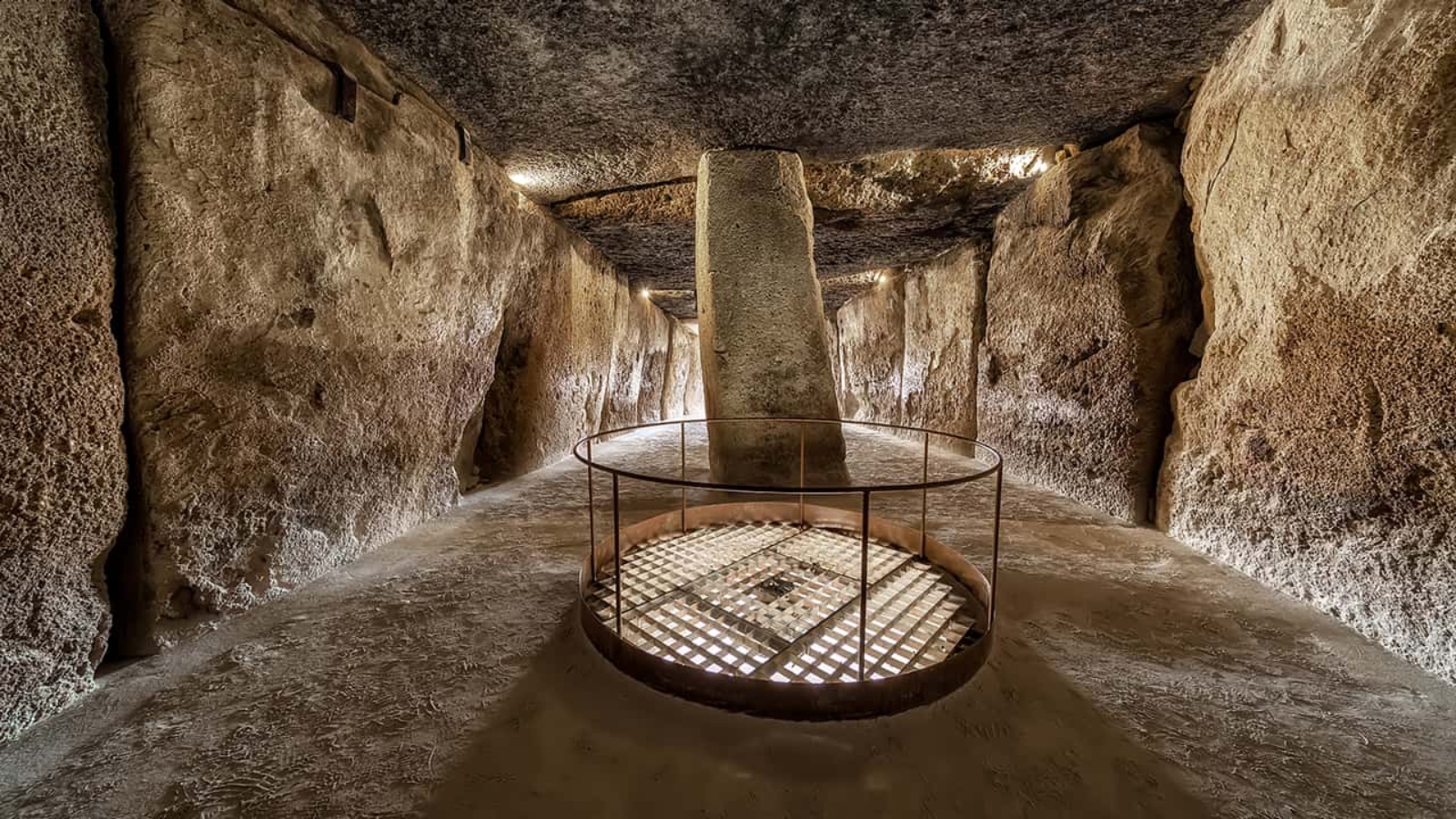The Menga Dolmen was erected more than 5500 years ago and is one of the summits of the lintelled architecture in the European Prehistory. The grandeur of this dolmen lies in the creation of an amazing inner space incomparable with others from the European Megalithism where it is not common the use of internal pillars, which is other Menga singularity.
This dolmen can be considered as a corridor sepulchre with three different sections: an atrium, a corridor and a large funerary chamber; however, the difference between the two latter ones is very little defined. The whole monument is 27.5 m long and it is covered by a 50 m diameter tumulus (an artificial mound).
The dolmen was constructed by using large upright slabs (orthostats) and horizontal ones (capstones). Among those large stones, it is worthy to mention the dimensions of the one at the top of the sepulchre and the weight, around 150 tons, of the one covering the funerary chamber. The fact of moving these stones from a quarry which was then located in the surrounding area of the dolmen had to be a difficult task. Visitors can get an idea of the construction process by watching the Menga audiovisual presentation projected in the Centro de Recepción.
During the works carried out in 2005 it was found out another peculiarity of this dolmen: a deep and narrow well placed inside the last section of the funerary chamber whose construction has not been dated yet.
However, and without downplaying the above, the worldwide significance of Menga lies in the intimate link with landscape as it is the sole dolmen in the continental Europe facing an anthropomorphic mountain, the Peña de los Enamorados. Menga’s central axis intersects this rock in a place known as Abrigo de Matacabras, where there are cave paintings in schematic style.

